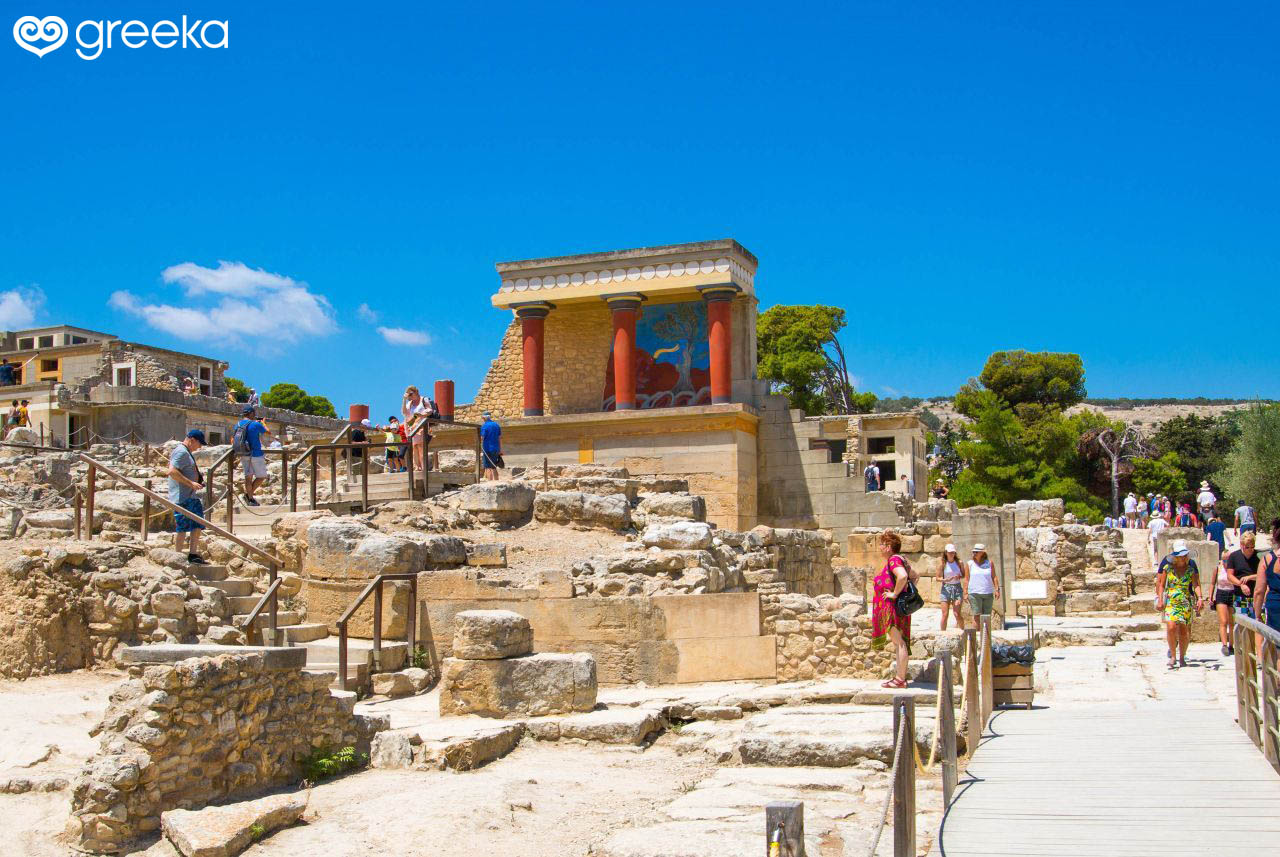Greece Stone and Bronze Age

The Stone Age
According to archaeologists, the earliest settlements in Greece date from the Palaeolithic era, between 11,000-3,000 BC, when a population coming from the east (and, as some believe, from Central Europe) started to develop stone tools and basic agricultural activities. In fact, the earliest organized town in Europe is the ancient town of Poliochni, Lemnos island, which dates from the 3rd millennium BC.
Excavations have proved that the civilization in Greece became more advanced between 3,500 and 3,000 B.C, with larger villages and a social organization with the formation of an elite group. Extensive agricultural communities appeared that were fishing, producing clay pottery and making sea expeditions. The good weather conditions and advanced social formations attracted to the Greek territory immigrants and traders from all the Mediterranean Sea.
At the same period, a trace of religion appeared, with gods inspired from nature: clay figurines of female and animals were placed in sanctuaries and graves.
The Bronze age
The art of metalworking arrived from the east around 3,000 BC. The use of bronze in tool making and weaponry was a rebirth for the civilization in Greece. The 2nd millennium BC gave birth to some great civilizations: the Minoan on Crete island, the Mycenaean on the mainland and the Cycladic (in Cyclades islands) in the islands of Centre Aegean.
This period is characterized by the rapid growth of population and the development of trading. The islands of the Cyclades, located in the center of the Aegea Sea, were an important trade center between Europe and Asia. The Cycladic civilization developed rapidly in all domains: trade, politics, and culture with impressive frescoes and marble figurines. Samples of the Cycladic architecture can be seen in the Museum of Cycladic Art in Athens and the regional museums on the Cyclades islands.
The Minoan Civilization
The Minoan civilization, named after the mythical King Minos, developed in Crete around 2,600 BC and onwards. The Minoans had a flourishing economic, political, social and cultural organization. The Minoan period was characterized by important trade activities and the construction of impressive palaces such as Knossos, Malia, Zakros, and Phaestos. During this period, the first writing in the Greek World, called Linear A, appeared for the first time in Crete. The Minoans also developed a strong naval power and installed many colonies in the Aegean Sea.
According to the remains found on the island of Crete and the lack of defensive walls, the Minoan civilization must have had peaceful relations with the other civilizations of the Aegean. This civilization disappeared suddenly around 1,500 BC, possibly due to the huge volcanic eruption of Santorini island. It is believed that the eruption has caused an enormous earthquake and huge tsunamis that crossed the southern Aegean and covered the Minoan towns in volcanic ashes. It is after that period, around 1,200 BC, that the rival Mycenaean civilization took control of the trade network of Crete.
The Mycenaean Civilization
The Mycenaean civilization took its name from the town of Mycenae, the most powerful kingdom that actually dominated all through this era. The Mycenaean society was formed by an elite group organized around the authority of a single figure, the king, with varying degrees of power. Their citadels were fortified with the "Cyclopean walls", called this way because the Greeks believed that only Cyclopes could have lift so large stones. The Mycenaean society with its great military strength conquered Crete and took control of the Minoan trade network.
The Mycenaeans also used a written language called Linear B, a development of the former Minoan Linear A, used only to register the goods and produce into the palaces. It was also the Mycenaeans that started the war against Troy as well as other expeditions around the Aegean. Between 1,250 and 1,150 BC, a combination of internal warfare and invasions from northern tribes destroyed most of the Mycenaean towns and the Mycenaean civilization disappeared.
The Dorian Invasion
The civilizations that flourished during the Bronze Age ended in an abrupt way during the 12th century BC when the tribe of the Dorians came from northern Europe. They scattered the Mycenaean population and decentralized their established control system. Agriculture, industry, and trade activities were divided into the villages. Gradually the economy, politics, and culture declined and all the trade networks with the Near East collapsed. The art of writing also disappeared.
Read next: Classical Period


